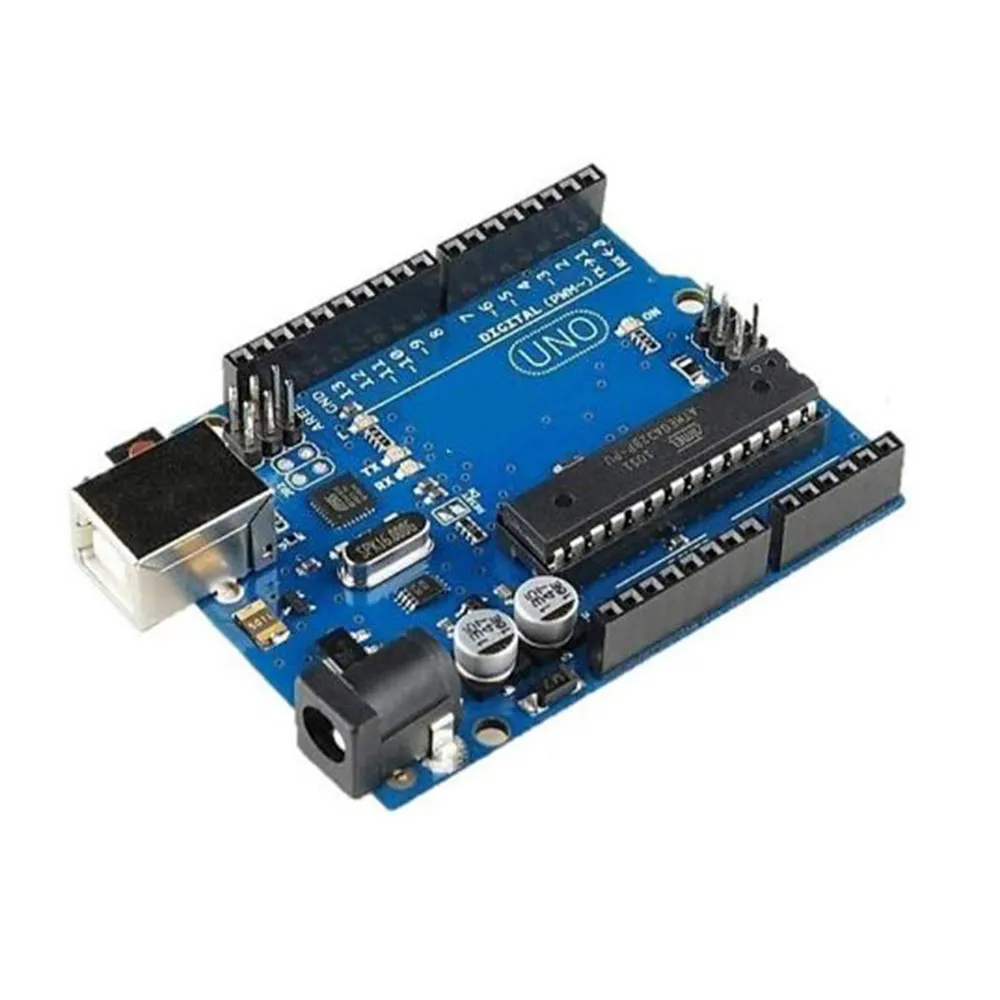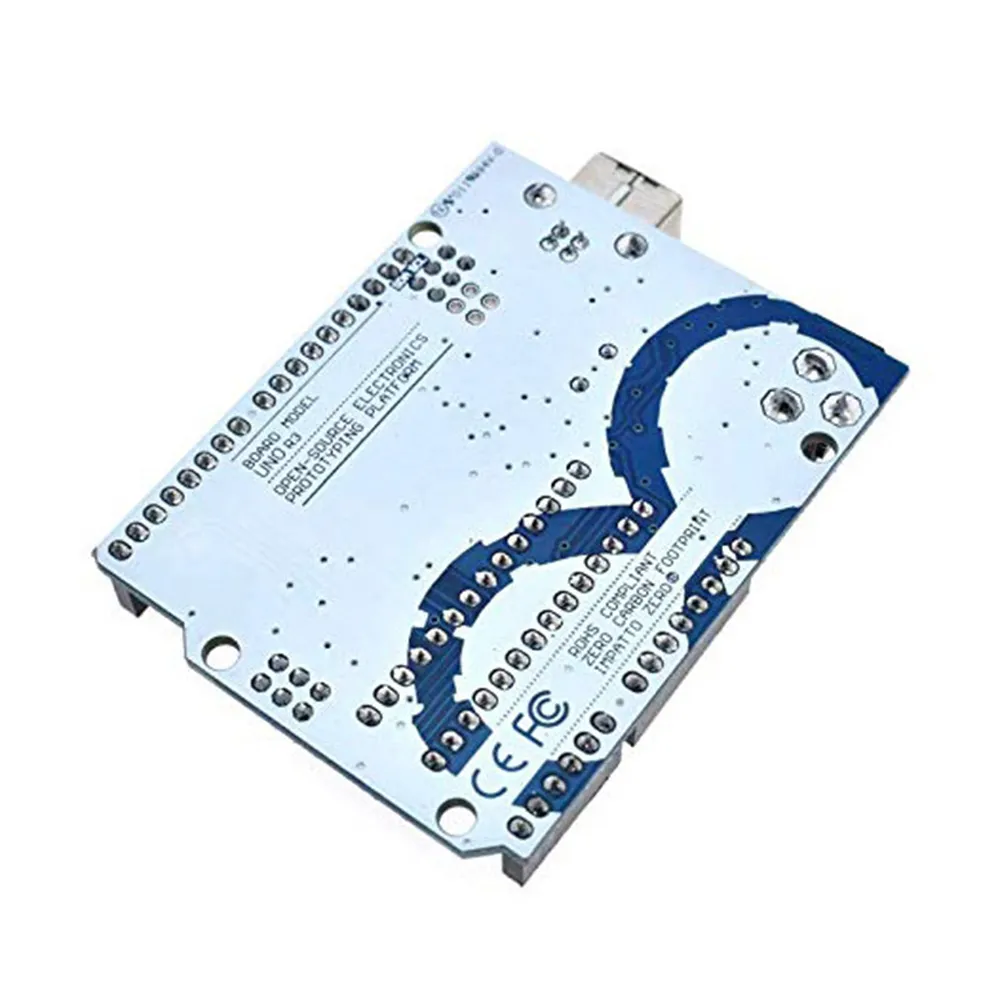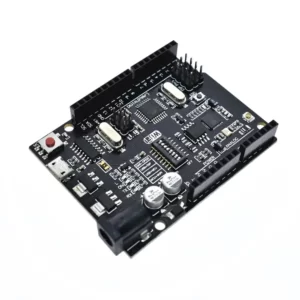Arduino UNO R3 Development Board Clone Model without Cable
₹649.00 Excl. GST 18%
In stock
- Microcontroller: ATmega328P.
- Operating Voltage: 5V.
- Input Voltage: 7-12V.
- Digital I/O Pins: 14 (of which 6 provide PWM output).
- Analog Input Pins: 6.
- DC Current: 40mA.
- Flash Memory: 32 KB.
- SRAM: 2 KB.
- EEPROM: 1 KB.
- Clock Speed: 16 MHz.
SKU:
RC-0251
Category: Arduino Compatible Boards
Tags: Arduino, Arduino UNO, Arduino with USB Cable, Development Board, Microcontroller, Uno
✅ Shipping Charge Only Rs.49
✅ Free Delivery on all Orders Above Rs.999
✅ All Orders Shipped within 24 Hours
✅ GST Input Tax Credit is available
The Arduino Uno R3 is a open source microcontroller board based on the ATmega328 chip. This Board has 14 digital input/output pins, 6 analog input pins, Onboard 16 MHz ceramic resonator, Port for USB connection, Onboard DC power jack, An ICSP header and a microcontroller reset button. It contains everything needed to support the microcontroller. Using the board is also very easy, simply connect it to a computer with a USB cable or power it with DC adapter or battery to get started.
The Uno differs from all preceding boards in that it does not use the FTDI USB-to-serial driver chip. Instead, it features the Atmega16U2Atmega8U2 up to version R2) programmed as a USB-to-serial converter. While the Arduino UNO can be powered via the USB connection or with an external power supply, the power source is selected automatically.
External (non-USB) power can come either from an AC-to-DC adapter (wall-wart) or battery. The adapter can be connected by plugging a 2.1mm center-positive plug into the board’s power jack. Also leads from a battery can be inserted in the Gnd and Vin pin headers of the Power connector. The board can operate on an external supply of 6 to 20 volts. If supplied with less than 7V, however, the 5V pin may supply less than five volts and the board may be unstable. If using more than 12V, the voltage regulator may overheat and damage the board. The recommended range is 5v to 12v for Arduino Uno.
Applications:
- DIY project prototyping.
- Developing varied varieties of projects that require a code based control.
- Learning AVR programming.
- Entry level circuit designing.
- Automation System development.
Features:
- 1.0 pinout: added SDA and SCL pins that are near to the AREF pin and two other new pins placed near to the RESET pin, the IOREF that allow the shields to adapt to the voltage provided from the board. In future, shields will be compatible with both the board that uses the AVR, which operates with 5V and with the Arduino Due that operates with 3.3V. The second one is a not connected pin, that is the reserve for future purposes.
- Stronger RESET circuit.
- Atmega 16U2 replace the 8U2.
Specifications:
| Microcontroller | ATmega328P – 8 bit AVR family microcontroller |
| Analog I/O Pins | 6 |
| Clock Speed | 16 MHz |
| Color | Blue |
| DC Current per I/O Pin | 50mA |
| Digital I/O Pins | 14 (of which 6 provide PWM output) |
| EEPROM | 1 KB (ATmega328) |
| Flash Memory | 32 KB (ATmega328) of which 0.5 KB used by bootloader |
| Input Voltage(Recommended) | 7-12V |
| Operating Voltage | 5V DC |
| PWM Output Pins | 6 |
| SRAM | 2 KB |
| Frequency (Clock Speed) | 16 MHz |
| Weight (gm) | 26 |
Package Includes:
1 x Arduino UNO R3 Development Board Clone Model without Cable
*Product Images are shown for illustrative purposes only and may differ from actual product.
Only logged in customers who have purchased this product may leave a review.






Reviews
There are no reviews yet.